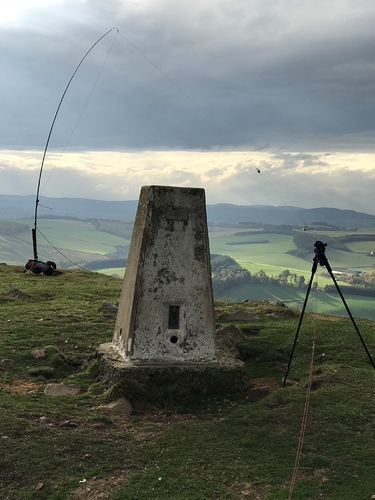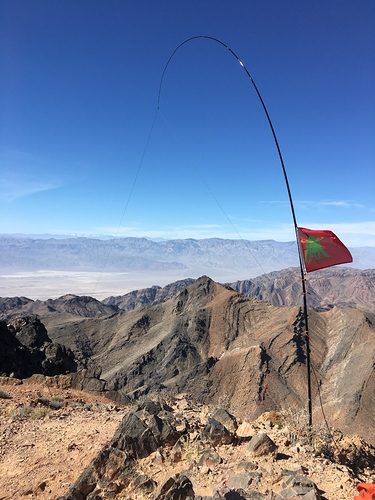As you can see Sean, ask a simple question and get lots of answers. There’s no right answer just people telling you what they use. You can read all the books on antenna design etc. and you can learn how they work and how to design them for the bands you are interested in. Then you need to take on board that SOTA operating adds a whole set of extra requirements to your antenna.
The first is deployability. Whatever you make you need to be able to deploy it on your own. In wind and rain and snow and more wind? Can you rig it up with gloves on? Can you connect it with gloves on?
The second is durability. The antenna will be setup and taken down at least once per trip and then coiled up. If you do several summits in a day then your antenna will be up and down all the time. All that will take its toll on connectors. So every connection needs to have some kind of strain relief or it will fail after repeated use. You need to use wires that will cope with this kind of abuse.
The third is weight. You have to carry it on your back. Up and down. So don’t make it out wire you could use to tie up a super-tanker. Whilst you can now run 100W for a good few hours without needing a team of sherpas to carry the batteries, 100W level is still relatively rare. 25-40W is not uncommon but the vast majority will be using 5W (817 class) 10-15W (Elecraft KX2/3) or less (Altoids radios). So you don’t need to use massive cables. But don’t overlook item 2!
As for the antenna, it will depend on your location and what you want to do. Most of the time “make SOTA contacts” is the requirement. Sometimes we have special activity sessions (EU<>VK or EU<>USA) and you may want to select different antennas and powers for those from normal “vanila” SOTA antennas.
For me in Scotland, I have few summits that have trees and so this makes a small telescopic fishing rod essential. That needs some method of fixing, either lash the pole to fence post or use a set of guys. I use 5m rods and the top section is generally unable to support much weight hence the feed point is around 4.5+m (about 15ft). An inverted dipole at that height for lower bands is a different beast to a horizontal dipole 1/2 wavelength above ground. It will be much more omni than you would expect and it wont be a DX antenna.
I mainly use a 60m/40/30m link dipole with a SOTArised clone of a Buddistick for 30m/20m/17m/15. The Buddistick clone works well and is quick to deploy but it is obviously down in performance compared against full sized 1/4w GP antennas. When the sun is very active, a wet noodle lets you work DX. But at the solar minimum, the lower performance stands out. I’ve just built a 17m/20m/30m dipole which in testing seemed a lot more lively.
EFHW (end fed half waves) are very popular because if you have trees on most summits, you can thrown one end of the wire up into the trees and let the antenna drop back to your radio or slope back. So you don’t need the fishing pole a lot of the time.
For a dipole, you need a length of coax that runs up your fishing pole plus a few metres to reach to where you are sitting. This will have some loss for the very lightweight cables. Less loss means more weight. An EFHW can be attached without any real feeder and so saves on this weight and loss. But you need a matching unit which is simple to make but can be lossy. Horses for courses!
As a newbie, I’d make a link dipole to begin with. Not because I think it’s the best but it’s the easiest to make and get working with limited experience and tools. Have a play with that. Likewise 1/4wave GP is a great antenna but needs a bigger pole quickly as it will be 1/4w + 1/8w in height. Also do try an EFHW. Making the matching unit is not hard and there are loads of designs to follow as well as kits of components available.
When you have all the kit ready, pack your bag and go and setup in a local park. Then you can make a list of everything you used and everything you forgot. That will help you pack the kit you definitely need along with stuff that may be useful but wasn’t needed. You don’t want to find out you forgot some essential gizmo when you’ve driven for 2hrs and walked for 3hrs. In miserable weather!
Above all, go out and have fun.


